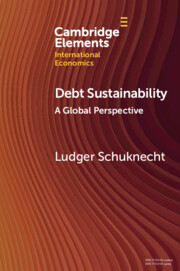Element contents
Debt Sustainability
Published online by Cambridge University Press: 31 August 2022
Summary
Keywords
- Type
- Element
- Information
- Online ISBN: 9781009218528Publisher: Cambridge University PressPrint publication: 15 September 2022
Bibliography
- 5
- Cited by



